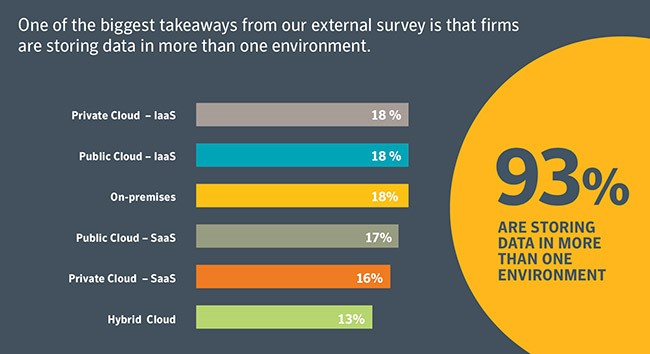The Anatomy of a Cloud Security Attack

Futurism Technologies
August 4, 2025 - 1.2K
5 Min Read
When you think about the cloud, you probably think about all the benefits it brings: scalability, flexibility, and cost savings. But just as with any major technological shift, there’s a flip side, i.e., cloud security. In fact, cloud has become one of the top targets for cybercriminals, and the stakes are higher than ever. But how does a cloud attack unfolds? And what steps can your organization take to safeguard your cloud environment?

Having spent more than two decades in cybersecurity, we’ve been up close with some of the most sophisticated cyberattacks. In this article, we’ll walk you through a simulated cloud breach, unpack the anatomy of a cloud attack, share key insights into the attacker’s tactics, and give you powerful recommendations to strengthen your cloud security.
How the Attack Starts?
In many organizations, cloud environments are constantly monitored for irregularities, with automated alerts triggered by anomalies such as unexpected spikes in data usage or login attempts from unfamiliar locations. In one case, an organization received an alert that seemed fairly routine, there were spikes in outbound data and multiple login attempts from foreign IP addresses. While these issues raised concerns, they didn’t seem like a major threat at first.
However, after investigation, it was discovered that the root cause of the alert was a sophisticated attack. Attackers had exploited a series of cloud misconfigurations and human errors to gain unauthorized access to sensitive resources. The misconfigurations were not major vulnerabilities in themselves, but a combination of small gaps that, when pieced together, created an opportunity for the attackers. This scenario is not uncommon, 76% of cloud breaches occur due to misconfigurations, such as improperly configured access permissions or unprotected storage buckets, according to a McAfee report.
- Exploiting Misconfigured Permissions: The attackers gain access to the environment by targeting overly permissive IAM (Identity and Access Management) roles, allowing them to escalate their privileges without triggering alarms.
- Lateral Movement: Once inside, the attackers move laterally through the environment, using cloud-native tools to explore and access sensitive data.
- Data Exfiltration: With elevated privileges, attackers extract large amounts of sensitive data, bypassing traditional security measures by encrypting their actions and making it harder for detection systems to identify the breach.
This type of attack is becoming more prevalent as cloud environments continue to grow and evolve. The increasingly complex cloud infrastructures, combined with frequent misconfigurations, create fertile ground for cybercriminals looking to exploit even the smallest gaps in security.
Read also: Hybrid Cloud – The Key to Gen AI Success
Breaking Down the Anatomy of a Cloud Attack: Step by Step
So, how did this attack unfold? Here’s the breakdown:
1. Phishing: The Gateway for Attackers
Expertly crafted to look like a routine communication from a trusted sender. Phishing remains one of the most common ways attackers breach cloud environments, accounting for 30% of all breaches (Verizon Data Breach Investigations Report). Once a user clicks on the link and enters their credentials on a fake login page, it’s game over.
2. Escalating Privileges
Once the attacker has the credentials, they can sneak straight into the cloud’s Identity and Access Management (IAM) system. There, they get access to overly permissive roles that allows them to escalate their privileges to admin level. Now, they are in control of critical resources, bypassing many of the basic security measures.
3. Moving Lateral and Exfiltrating Data
With administrator-level access, the attacker can use cloud-native tools (like AWS Lambda and Azure Functions) to move undetected throughout the environment, accessing databases and sensitive customer data.
Did you know?
60% of cloud breaches involve data exfiltration! (Cisco Cloud Security Report). Attackers often use encrypted channels to transfer the data.
4. Covering Tracks
The final phase is all about obfuscation,the attacker covers their tracks by rotating IP addresses and making their actions appear as legitimate API calls. The use of cloud-native tools to mask their movements make it incredibly difficult for traditional security systems to spot the malicious activity.
Strategic Remediation: How To Stop the Breach and Recover
So, what next? After identifying the breach, it is time to launch the remediation mode, following these strategic steps:
- Containment: Immediately disable the compromised account, ensuring the attacker couldn’t make any further moves within the environment. Also isolate the affected cloud resources to stop the attack from spreading.
- Forensics, Mapping the Breach: The next step is to conduct a forensic analysis of the attack. Comb through logs, audit trails, and API calls to understand the full scope of the attack. Most often, misconfigured IAM roles turn out to be a significant contributor to such breaches. In fact, 73% of cloud security incidents are attributed to misconfigured IAM roles, according to Gartner.
- Restoration and Recovery: Restore the affected systems from secure backups. Data integrity is key, and make sure that no remnants of the attacker’s presence remain in the environment.
- Security Enhancements: Finally, implement stronger security measures, including multi-factor authentication (MFA), and robust IAM solutions and policies, and deploying real-time threat detection tools to monitor for future anomalies.
Read also: How to Respond to an Attack in Real-Time
Insights Into the Tactics of Cloud Threat Actors
As cloud-based attacks become more sophisticated, it’s essential to understand the tactics used by modern adversaries. Here are some critical insights:
- Leveraging Cloud-Native Services: Today’s attackers are smart,they know how to use cloud-native tools like Lambda, Azure Functions, and even serverless computing to cover their tracks. These tools allow them to move undetected within the cloud, making it harder for traditional security systems to identify malicious activity.
- Misconfigurations Are Still a Major Weakness: Misconfigurations remain one of the biggest threats in cloud security. According to a report by Accenture, 93% of cloud breaches involved misconfigured cloud services. These misconfigurations can be as simple as giving unnecessary administrative privileges or leaving storage buckets publicly accessible.
- Phishing Remains a Powerful Weapon: It’s not just about weak passwords anymore, attackers are using sophisticated social engineering tactics to lure cloud administrators into giving up their credentials. In fact, 81% of data breaches involve compromised credentials, and phishing plays a significant role (Verizon Report).
Read also: Understanding Zero-Click Attacks in the Digital Age
Cloud Security Best Practices: How to Protect Your Organization
To stay ahead of attackers, here’s what your organization can do:
- Enforce Multi-Factor Authentication (MFA): MFA should be non-negotiable for all accounts with access to sensitive cloud resources. This one step alone can reduce the likelihood of a successful attack by 99.9% (Microsoft).
- Follow the Principle of Least Privilege (PoLP): Regularly audit IAM roles and ensure that users only have the permissions they need to do their job. This simple practice can minimize the potential impact of a breach.
- Deploy Cloud Security Posture Management (CSPM): Use CSPM tools to automate the detection of misconfigurations and vulnerabilities in your cloud environment. These tools help you ensure your cloud services are always securely configured and compliant.
- Conduct Regular Security Audits and Penetration Testing: Regular vulnerability assessment and penetration testing (VAPT) are crucial for identifying weak spots. Penetration testing can simulate real-world attacks, giving you a deeper understanding of potential vulnerabilities.
- Educate Your Team About Phishing: Human error continues to be a major risk factor in cloud security breaches. Regularly train your employees to recognize phishing attempts, and use email filters to block malicious content.
- Back Up Your Data: Ensure that critical data is securely backed up and easily recoverable. The average cost of a data breach is around $4.24 million (IBM Report), and having proper backups can significantly reduce recovery time and costs.
Read also: Your Guide to AI and Cybersecurity
Ready to Secure Your Cloud?
It’s clear: cloud security is no longer optional. As cybercriminals continue to evolve and come up with sophisticated attack tactics, you need to stay one step ahead. Don’t wait for a breach, implement these best practices today to protect your organization’s cloud infrastructure. Whether it’s tightening your IAM policies, deploying real-time monitoring, or training your team on phishing, every step counts.
Want to learn more about securing your cloud environment? Contact our cloud security expert today for a tailored cloud security audit. We’ll help you identify weaknesses, optimize your security controls, and keep your cloud safe from the next big attack.
Subscribe Now!
TRENDING POSTS
-
Agentic AI and Generative AI: What’s Best for Your Business?
-
Deepfake Scams: How to Protect Your Business in the Age of AI
-
AI and Cybersecurity: A Strategic Guide for C-Suite Leaders in 2025
-
How Location Intelligence is Revolutionizing BFSI: 6 Must-Know Benefits
-
Cloud and Data Engineering: The Path to Faster Insights and Smarter Decisions
-
From Delays to Innovation: How AI is Optimizing the Construction Industry
-
Data-Driven Future: 6 Trends to Watch Out For
-
The Impact of IoT on Reducing Maritime Carbon Footprints
-
Demystifying SASE: What is Secure Access Service Edge?
-
The Role of AI in Construction Safety
-
What Is Predictive Maintenance and Why Does It Matter?
-
What is Ransomware-as-a-Service (RaaS)? Everything You Need To Know
-
The Role of Smart Maritime IoT Solutions in Enhancing Maritime Safety
-
Revolutionizing Telecom with AI-Driven Network Slicing
-
Data Integration Unlocked: From Silos to Strategy for Competitive Success
-
Navigating the Shadows: Understanding Zero-Click Attacks in the Digital Age
-
AI Reimagined: Crafting Next-Gen AI Apps with Expert Fine-Tuning
-
Futurism AI: Turning Ideas into Apps at Lightning-Fast Speed
-
Accelerate AI Across Your Enterprise With Futurism AI
-
Flying into the Future: How AI is Redefining the Future of Aviation
-
Beyond Intelligence: The Rise of Self-Healing AI
-
The Indispensable Role of a Trusted Offshore AI Company in 2024 & Beyond
-
IoT-Powered Smart Warehouse Management: A Detailed Guide
-
Turning Data into Dollars: The Futurism Path to AI-Driven Success
-
5 Ways to Prepare Your Business for Digital Transformation
-
4 Ways To Win at Digital Transformation on a Shoestring Budget
-
Why AI in Digital Marketing is the Next Big Thing?
-
How AI Will Enable Faster Adaptation of Digital Transformation
-
How Is Digital Modernization Important In Supplier On-Boarding?
-
Top 10 Email Marketing Tips for This Holiday Season
-
Benefits of using ERP Software for Energy and Gas Industries
-
5 Features of Supply Chain Management Software





